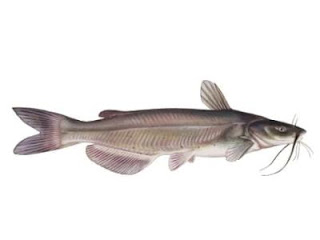 |
| Buffalo Fish | credit: USFWS |
In May 2022, a bow fisherman from Bismarck set a new North Dakota bow/spear state record for bigmouth buffalo.
Mitch Estabrook took a 60-pound, 8 ounce buffalo by bow from Heart Butte Reservoir.
Estabrook's fish broke the previous record by 3 pounds, taken at Heart Butte Reservoir in 2017.
Buffalo are a native fish sometimes confused with nonnative and invasive common carp.
North Dakota Game and Fish Department records indicate that Estabrook’s fish is the largest weighed in the state that was not a paddlefish or pallid sturgeon.
Buffalo fish are identified by their heavyset bodies, large scales, and blue-green to bronze coloration.
They have relatively large, forward-opening mouth for a member of the sucker family.
Bigmouth buffalo are the largest member of the sucker family.
Buffalo are commonly mistaken for, but not related to common carp.
The species is not commonly caught by anglers, but are a primary target for those who bow fish.
Recent studies have shown bigmouth buffalo can live to very old ages, with some fish over 100 years old recently documented in neighboring Minnesota.
source: North Dakota Game and Fish Department

